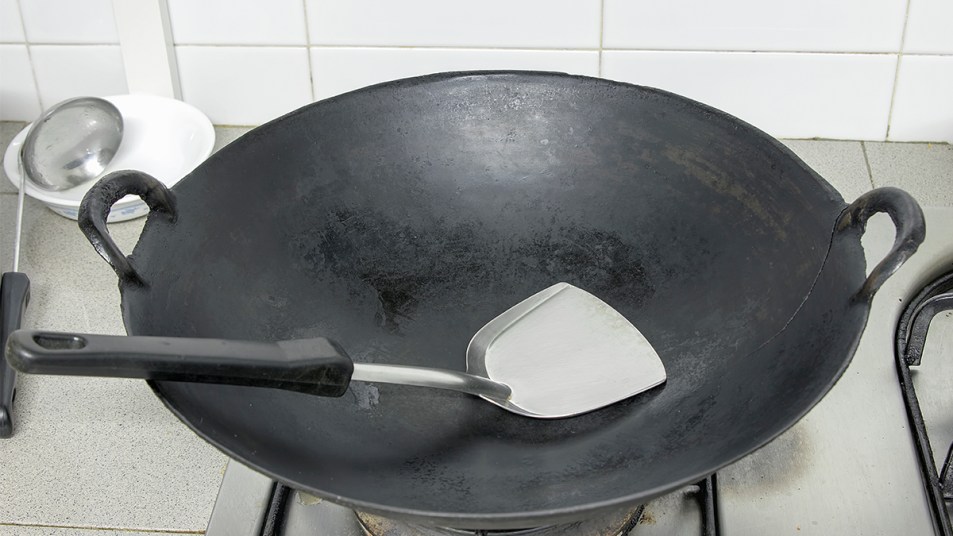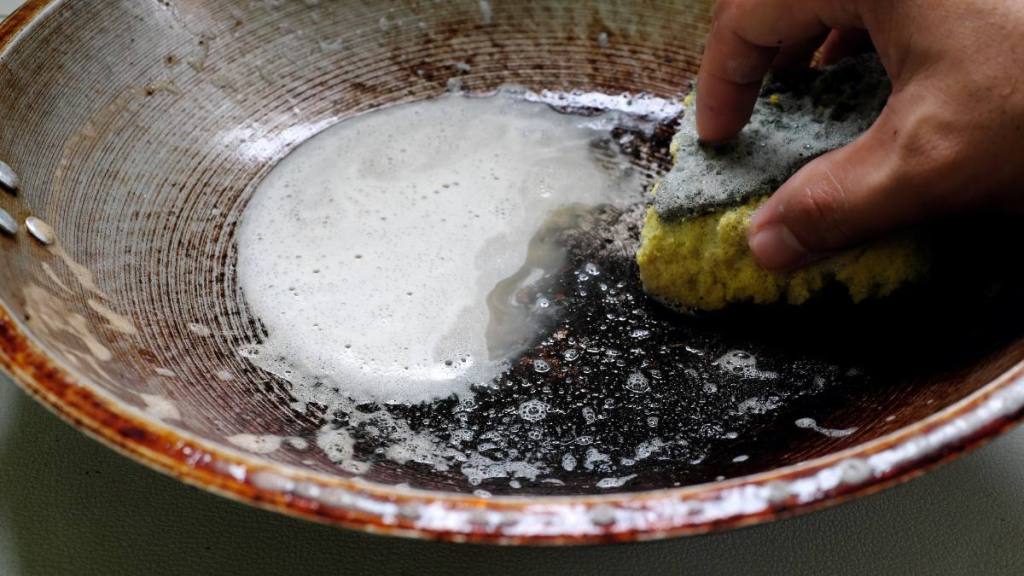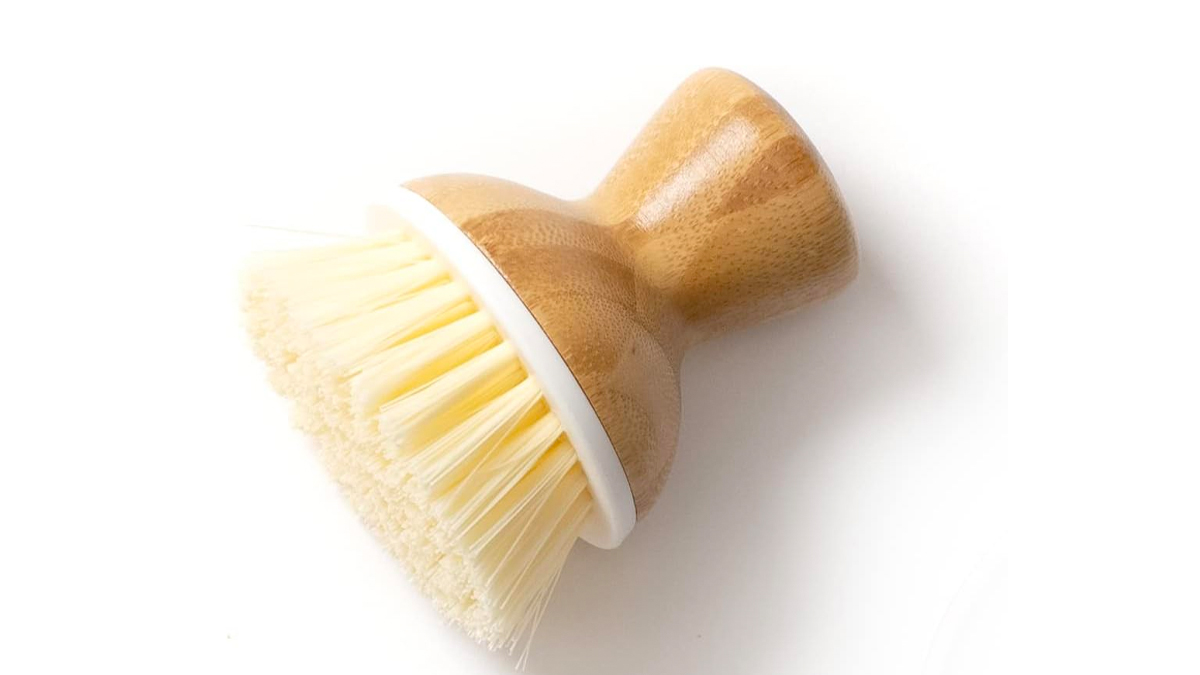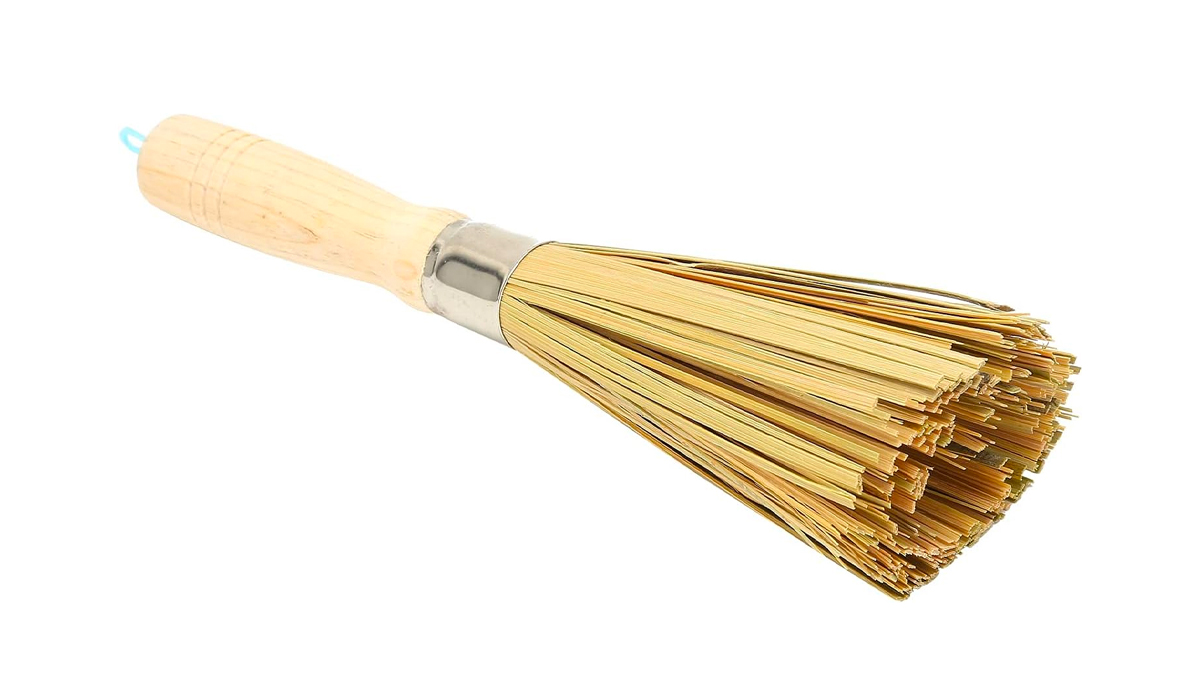The Savvy Salt Trick That Cleans Burnt-On Food From a Wok (Or Frying Pan!) in Seconds
Chinese chef reveals his best wok cleaning tips — they work for non-stick frying pans too!

That hankering for stir fry had you slicing veggies, dicing chicken and pulling out the old wok last night. The meal was well worth it, but you’re not really sure how to clean the bulky pan. Can you throw it in the dishwasher? Does it need a special cleaner? We asked experts those questions and more to get tips and tricks for how to clean a wok.
What we learned: Most woks are made of carbon steel, which can be a little intimidating to clean, especially if you’re used to cooking in non-stick pans. (For cleaning info on less common types of woks, keep scrolling.) But with the right care a wok will last a lifetime, and it even gets better with age. “The patina on your wok determines a good sear when you stir-fry,” explains Ching He Huang, a television chef and cookbook author, who notes that a well-seasoned wok has a non-stick surface that will develop naturally from cooking in it with oil. “It gives crispness to your ingredients, in particular vegetables, so they don’t stew but slide and create a delicious guo-wei ‘breath of the wok’—that distinct smokey flavor.” Read on to learn the cleaning method that ensures your wok develops the best flavor.
How to clean a carbon steel wok
1. Rinse with water as soon as it cools down

The sooner you clean your wok, the easier it will be to get up any burned-on bits, say experts. Plus, if you wait too long, liquids and acidic ingredients can cause a wok to rust, says Huang. Use water and a spatula to loosen and scrape off any remaining bits of food. Then scrub the surface clean, rinsing with warm water as you work. Note that over time the wok will develop a patina, so don’t expect it to stay shiny and silver-colored.
2. Scrub it with a bamboo brush


If you cook in a wok often, the pros recommend a bamboo brush (Buy from Amazon, $14.98) for daily cleaning. “I like using a bamboo brush because your hand doesn’t have to make contact with what you’re scrubbing,” says Dan Seto, the content creator behind Chinese Canadian Roots TV. “I find a bamboo brush can clean faster because it covers more area than a regular brush or a sponge.” But a typical sponge with a scrubbing pad is also fine to use . However, “don’t scrub so hard that you remove the coating,” says Huang, who discourages using metal scourers that can easily remove the natural patina of the wok.
3. If it’s extra greasy, use a little soap
The common wisdom is not to use soap to clean a wok, but in his popular wok cleaning video below, J. Kenji López-Alt, the author of The Wok: Recipes and Techniques says it’s okay to use a little if the pan is excessively greasy. Seto agrees, “The woks at my family’s restaurants were cleaned with heavy detergents, and there was no harm done,” he points out. “But generally, I find you don’t need to use any soap to clean the wok for home cooking. Once in a while, I use a mild liquid dish soap when I stir fry with thick sauces.”
Once the wok is clean, it’s critical to dry it thoroughly — and the easiest way to do this is on the stove. “After washing, place [the wok] back on the burner to dry to prevent any rusting, that’s best practice,” says Huang. Heat on low until all moisture evaporates.
4. Once it’s dry, rub on a little oil
Add a scant teaspoon of plain vegetable oil to the warm dry pan and rub it into the wok with a thick pad of paper towels (being careful not to touch the hot pan!). Then, use a clean, dry paper towel to soak up any excess oil. López-Alt says to think of it almost as if you had just made a mistake and are trying to get that oil back off. “Take care not to scratch the wok when storing,” Huang cautions. You can avoid that by not stacking anything on top of it.
How to deep clean a wok to remove burnt-on food
Seto learned this trick for removing burnt-on food from a professional Chinese cook: Instead of using hot water to loosen the food, use vegetable oil and salt. “The great thing about using salt for cleaning a wok is that it’s a natural product and doesn’t leave a harmful residue,” says Seto. Here’s how: Turn the burner heat to medium high and add about 3 tablespoons of oil. When the oil starts to bubble, swirl the oil around the pan and add 5 to 6 tablespoons of salt to the pan then turn off the heat. Fold up a few paper towels and use a pair of cooking tongs to grasp the towels and rub the salt into the burnt-on food. Once you’ve loosened all the food, dump the salt, oil, food bits and dirty paper towels into the garbage and wash as described above. Watch the tip in action below:
What about other types of woks?
Cast iron woks are less common (and heavy!), but if you have one, you can follow the same advice for a carbon steel wok listed above.
If you have a non-stick wok, steer clear of abrasive scrubbing techniques — stick to a sponge that’s safe to use on non-stick coatings and avoid stacking anything inside.
If you have a flat-bottomed wok designed for an electric stove, you’ll also want to pay attention to the underside to make sure that there are no rough bits that could scratch your cooktop.
For more cookware cleaning tips, click through:
Culinary Pro: The Best Way to Season a Cast Iron Skillet + The Mistake Most People Make
How To Clean Stainless Steel Kitchen Appliances and Pots
Why You Should Never Combine Baking Soda and Vinegar to Clean Baking Sheets












